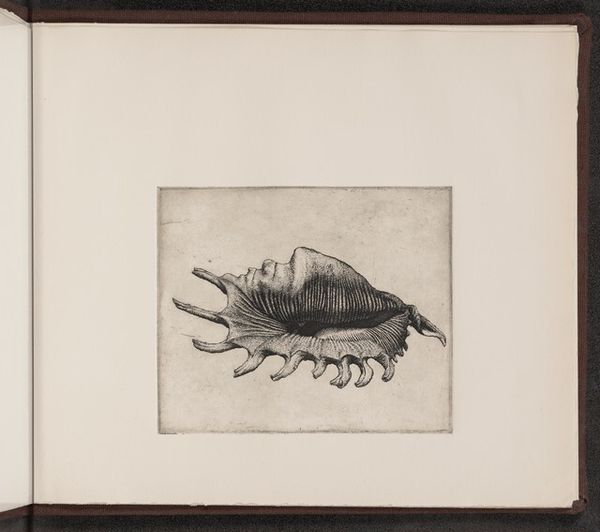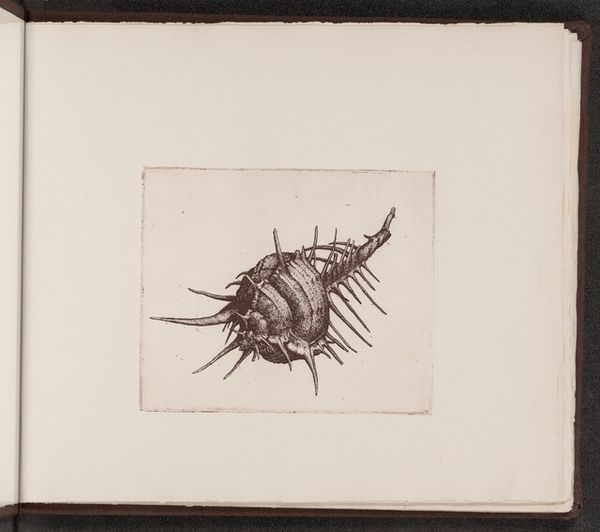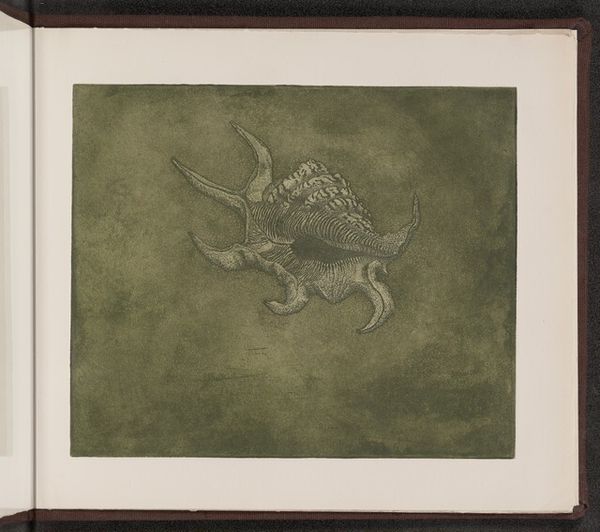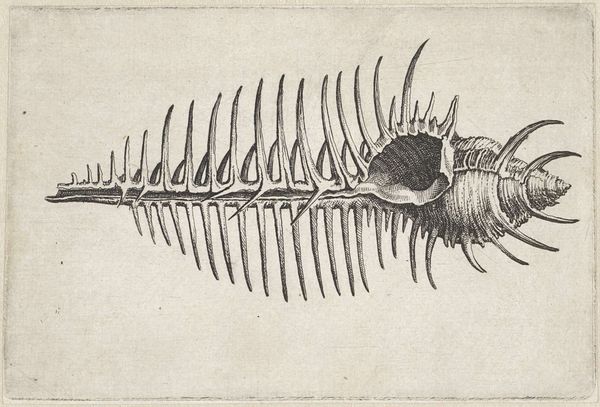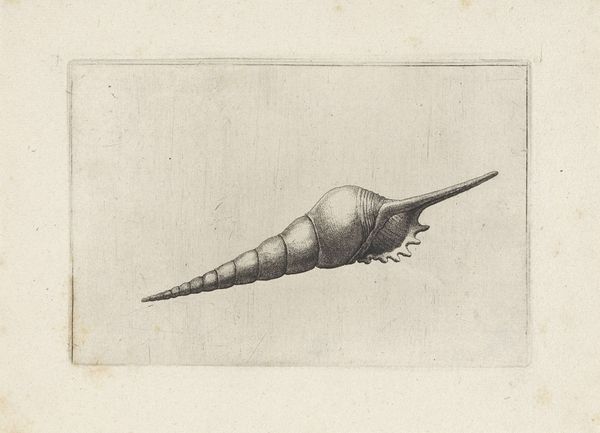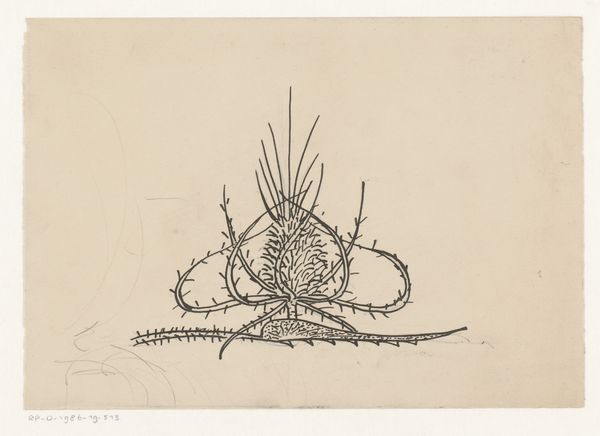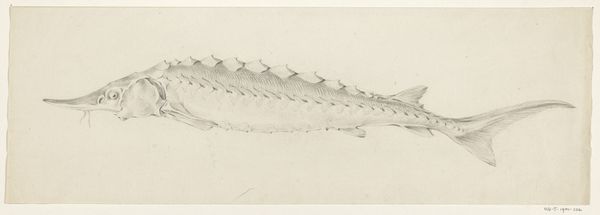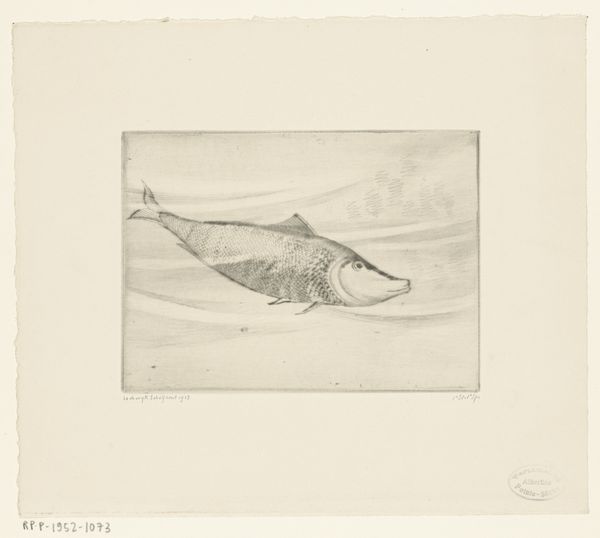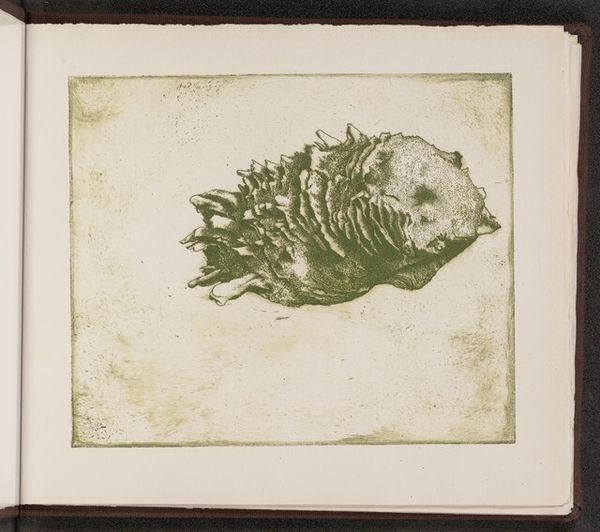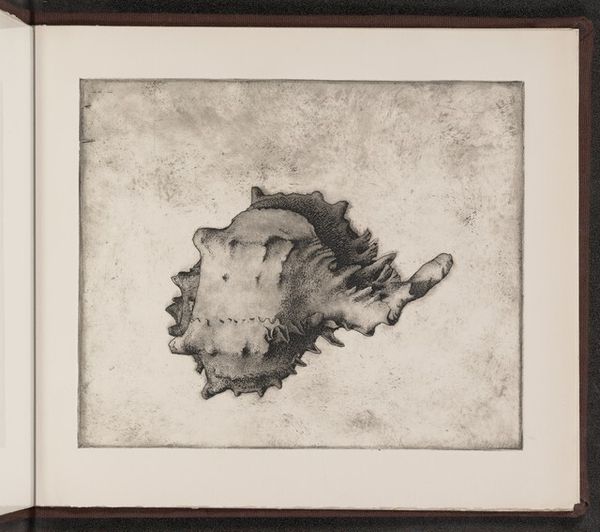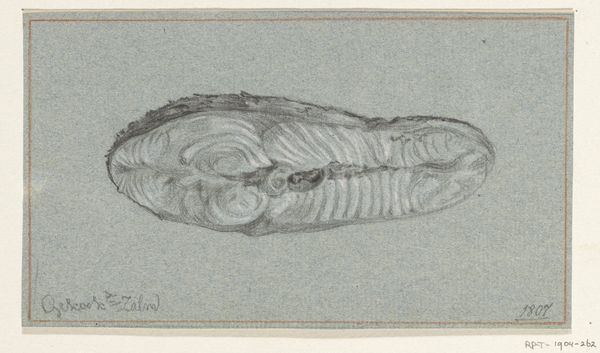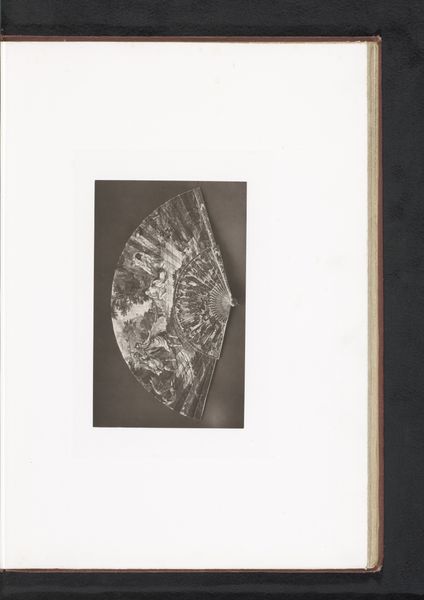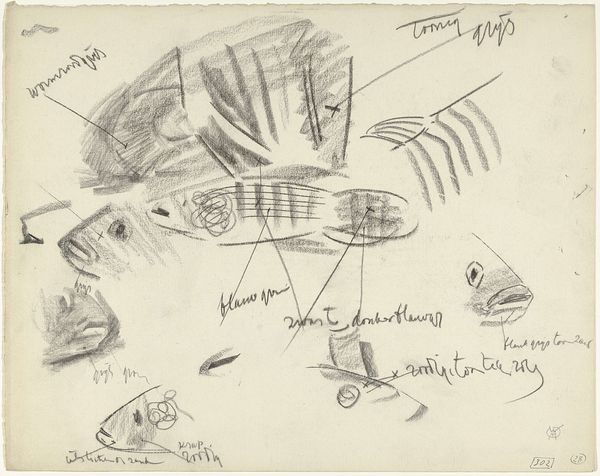
drawing, print, etching, ink
#
drawing
#
ink painting
# print
#
etching
#
etching
#
ink
Copyright: National Gallery of Art: CC0 1.0
Curator: Charles Arthur Wells Jr. crafted this etching, probably in 1962, titled "Murex tenuispina". Editor: Striking. The texture and those dramatic spines create a captivating sense of something both fragile and dangerous. The almost monochromatic palette contributes to its intensity, doesn’t it? Curator: The monochromatic choice and etching process serve to amplify the material reality of the shell. Each line, each shadow, speaks to the artist's hand and the acid's bite on the plate. Think of the laborious process needed to produce a single print. Editor: Exactly. Speaking of process, look at how the converging lines and controlled gradation articulate its three-dimensional form, which enhances its presence against the flat, subdued background. The stark contrast helps too. Curator: The shell itself, though—consider what that represents. In Wells' context, perhaps this shell serves as a specimen, reflective of the way marine life and their bodies are regarded as materials in research. His choice of printmaking – a medium readily reproduced - creates interesting issues of value and accessibility in artistic and scientific endeavors. Editor: Interesting. I see it too as a powerful symbol. A symbol for both protection and vulnerability, the shell evokes the fragility of life. Curator: Absolutely, and etching perfectly captures that dichotomy. The delicate lines contrasted against the rougher, textured background emphasizes the shell’s own delicate but resilient architecture. Editor: Wells captures such tactile sensation of it— the spines practically beg to be touched, and one cannot but marvel at the interplay between smooth and ridged surfaces, hard and soft outlines. Curator: An act that links art with material and scientific cultures, and considers their overlapping values. It really encourages us to re-examine what is often dismissed as 'craft.' Editor: It invites us to ponder these structures, to explore not only the inherent forms, but also how light plays and dances with the natural world to create stunning visual echoes. Curator: This etching becomes more than just a portrait. The work prompts us to see beyond surface aesthetics and connect with the labor, production, and material embedded within the print itself. Editor: True. Thank you, this exploration was truly fascinating. I will always appreciate it in its own aesthetic terms from now on.
Comments
No comments
Be the first to comment and join the conversation on the ultimate creative platform.
